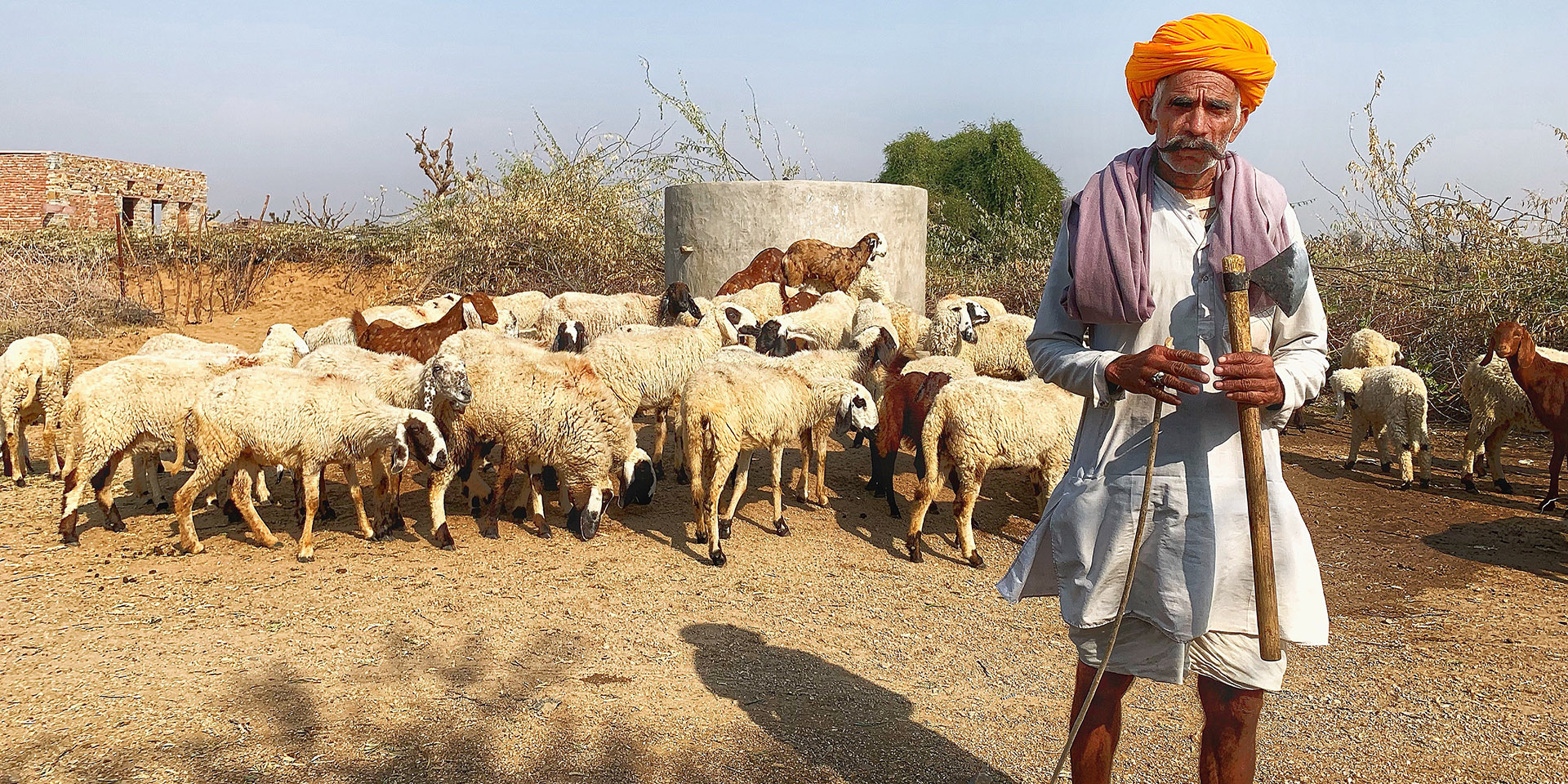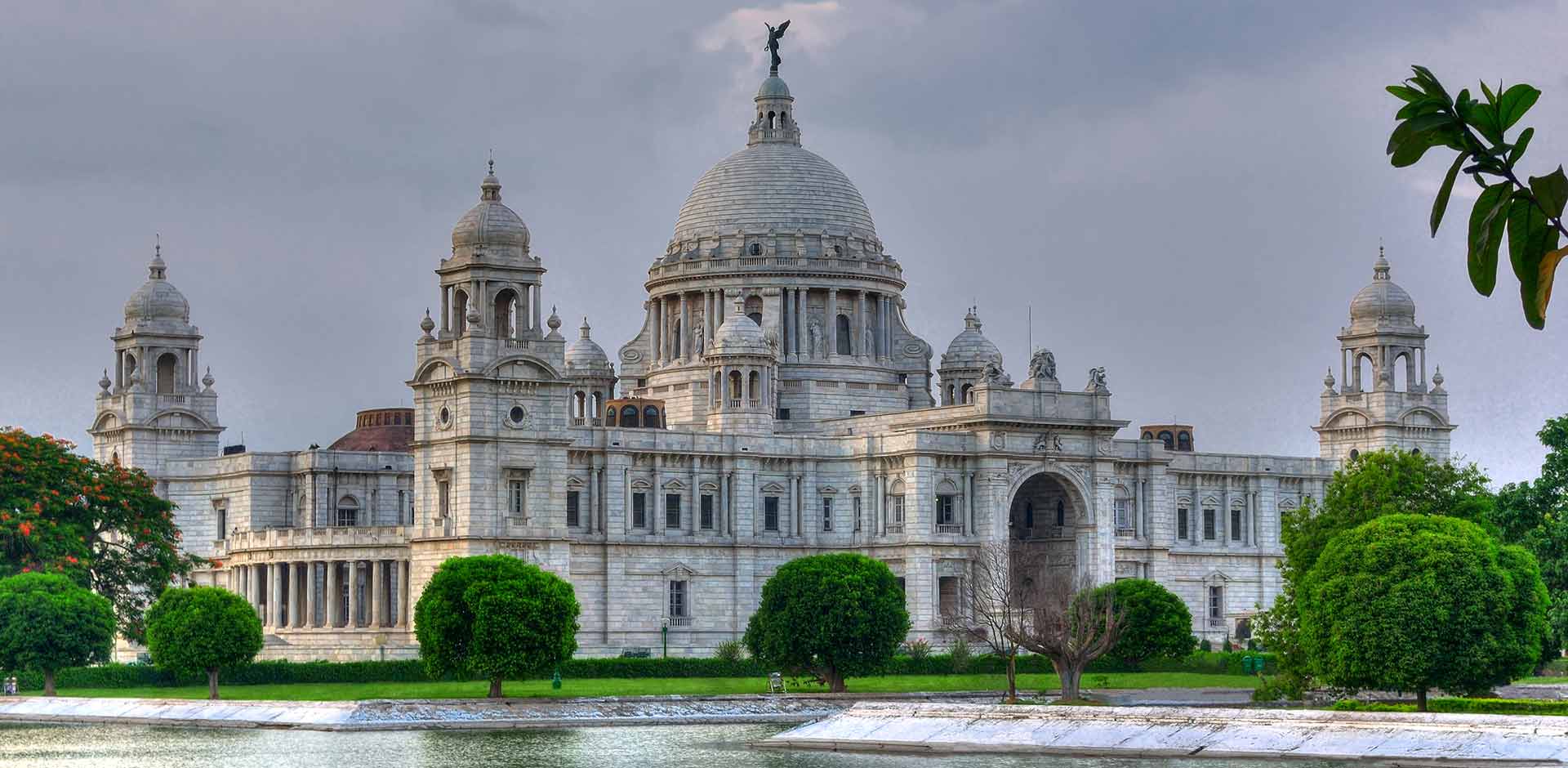The real allure of India lies in the diversity of its regional cultures. The Pushkar Camel Fair is one of the most photographed festivals of the year. Enormous crowds descend to the annual market the the trading of camels and cattle and a celebration of epic proportions. The town buzzes with local and international tourists arriving by the thousands. But Pushkar sans camel fair is an opportunity to appreciate the soul of the city without the facade.
Pushkar Lake

A closer, more laid back look reveals Pushkar is unlike any other Rajasthani city; it’s calm, it’s quaint, but most importantly it’s a religious destination that attracts a unique set of visitors.
Pushkar Lake is the epicenter of all the activity in the city. During the non-festive months, there is a spiritual serenity in the air. The grand evening aartis held on special occasions are much quieter and reserved.
The Jaipur Ghat is often the main attraction in the evening with light background music and a dreamlike ambiance amplified by the setting sun. Sunsets at Pushkar Lake are moments of intense introspection.
Temples and Ghats

ABOVE: Shoe-less lakeside walk.
They are also a chance to mingle with people as locals and tourists alike sit on the steps surrounding the lake, and watch as the city bathes afresh in hues of red and orange.
The 52 ghats of Pushkar are sacred. It is customary to walk alongside the lake with your shoes off, and if you do forget to take them off, temple pundits are quick to remind.

ABOVE: Sunset on a ghat.
For a more immersive experience, special private ceremonies, conducted at any one of the temples that dot the lake, include offerings to the gods as well as a dip in the holy waters.
If you enjoy the outdoors, then a hike up to the nearby Savitri Temple is a must. One of the most prominent temples, its location atop a hill also makes it the ideal vantage to relish vistas of Pushkar.
Markets

The main markets of Pushkar are all in the proximity of the lake. Amidst the many shops selling souvenirs, serving “authentic” Italian coffee, and displaying colourful paraphernalia are doorways and buildings that highlight the intricate architecture of the region. Small passageways lead to temples and then the ghats, adding a sense of an omnipresent divinity to the city.
The eccentricity of Pushkar is best witnessed through its people and shops. Here, you will find Kikaso, also known as the “Picasso of Pushkar,” selling colourful psychedelic prints on cloth, shirts, and pants particularly suited for the hippy traveller; you can even find a bikini made with silver coins. If the lake is the soul of Pushkar, the markets are the heart that keeps the town thriving all times of the day.
Exploring the Streets of the City

ABOVE: Backstreet architecture.
The streets that surround the lake are a treasure trove of quaint Rajasthani living – beautiful vintage houses with art on the outside walls announcing births or marriages. Almost every tree base seems adorned by religious idols. The locals, who must have countless tourists pass day, are calm, polite, and helpful. These are tender moments that define Pushkar as a city packed with a passionate and emotional temperament that is welcoming and quirky enough to impress the most ardent of travelers.
Camel Safari

ABOVE: Pushkar camel.
During the annual camel fair in Pushkar, prices are at their highest. From hotel rooms to food and especially camel safaris; visitors often have to spend a small fortune to enjoy crowded camel safaris.
A three-hour ride into the desert is worth it, especially if you reach the open fields around sundown. However, the desert near Pushkar lacks the drama that one would expect. Sadly, there are no impressive sand dunes here. Instead, it is a vast field that gives first-time travelers a look at a different kind of desert.
Indulge in Rajasthani Street Food
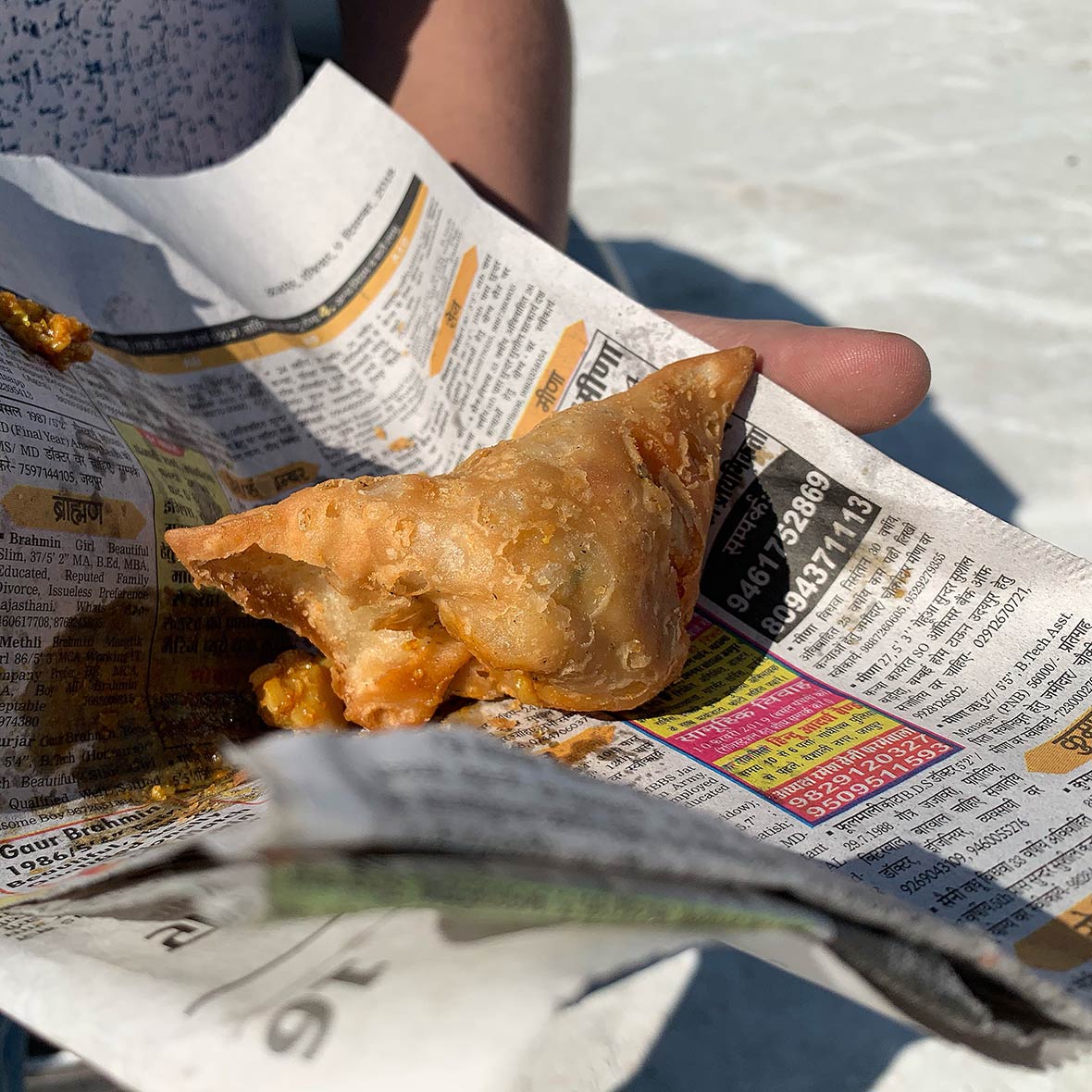
ABOVE: Newspaper wrapped samosa.
Due to the international clientele that frequents Pushkar, there is a wide range of food available for all tastes. The authenticity of the region though is in savoring local food. The shopkeepers on a lazy day are typically chatty and eager to serve their best food, be it a traditional Rajasthani thali or a quick plate of poha – a local rice specialty best eaten with piping hot tea in an earthen glass.
A Base for Discovery

ABOVE: Region around Pushkar.
For a novel adventure, venturing out of Pushkar is recommended. One essential reason for photographers to visit Pushkar Fair is to capture profiles of the colorful residents. During the off-season, driving along the backroads of Pushkar, it is possible to observe small villages for spectacular scenes of people going about their lives.
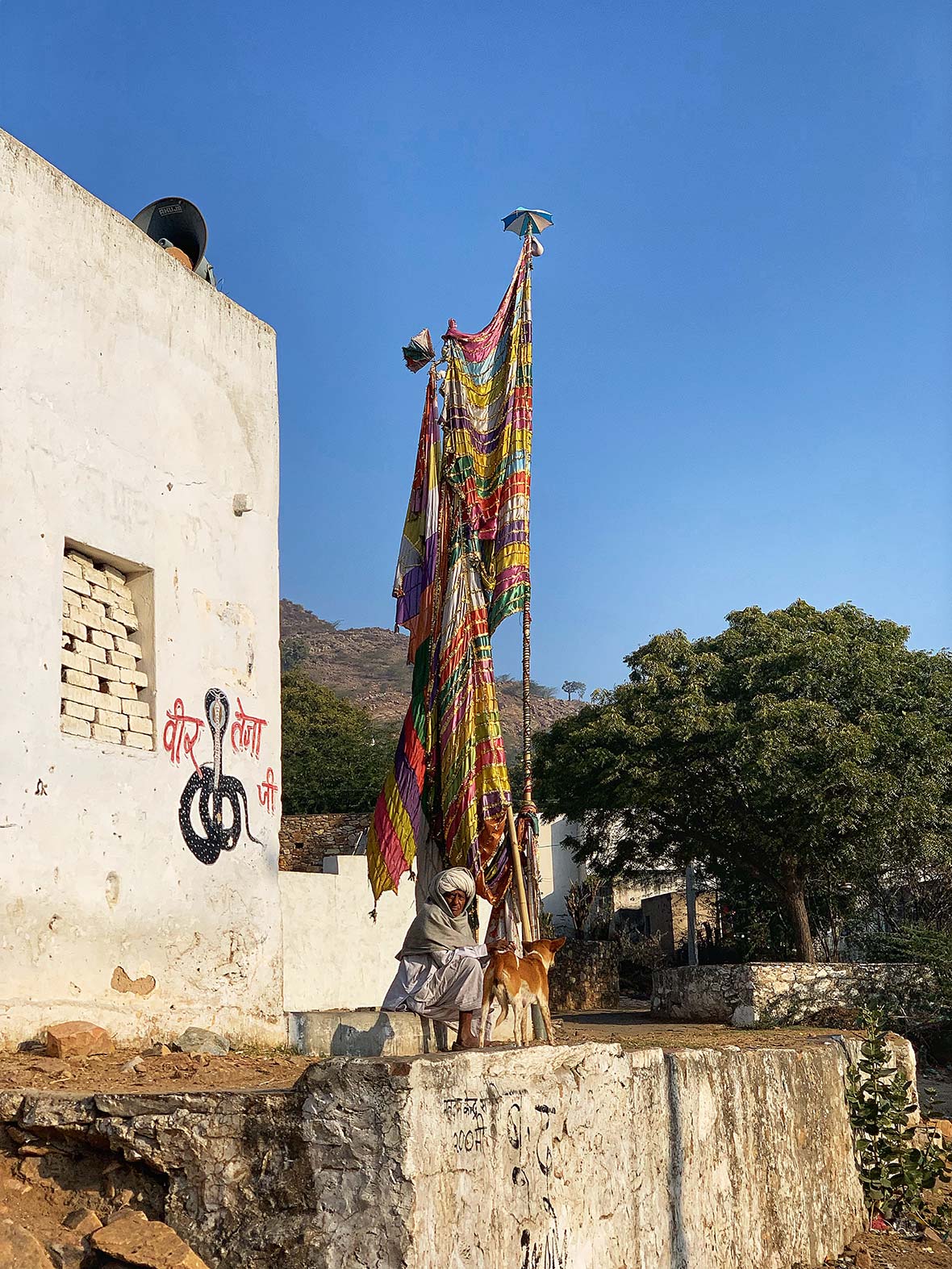
Old men of the village smoking hookah while having animated conversations in the sun, children pushing rubber tires along with sticks, and the women of Rajasthan in their bright sarees going about their daily routine. It’s a beautiful insight into how simple, colorful, and enchanting life is in a supposedly barren land.
Among the most exciting places near Pushkar is Ajmer. A small town, Ajmer also has its artificial lake in the Ana Sagar. However, the city is primarily known for its Sufi shrine, Ajmer Sharif Dargah. People from different religions visit the shrine daily, while the evening qawalli here has a following of its own. The town of Pushkar, which is a sacred Hindu destination, and the Muslim Dargah of Ajmer are a stark reminder of how people from different religions have lived here in peace.
Sambhar Salt Lake

ABOVE: Truck on Sambhar Lake.
If in search of a more natural scene of limitless expanse, then a two-hour drive from Pushkar leads to the largest inland salt lake of the country: Sambhar Lake. It is a natural wonder with spectacular vistas best admired from the top of the nearby Maa Shakambari Devi Temple.
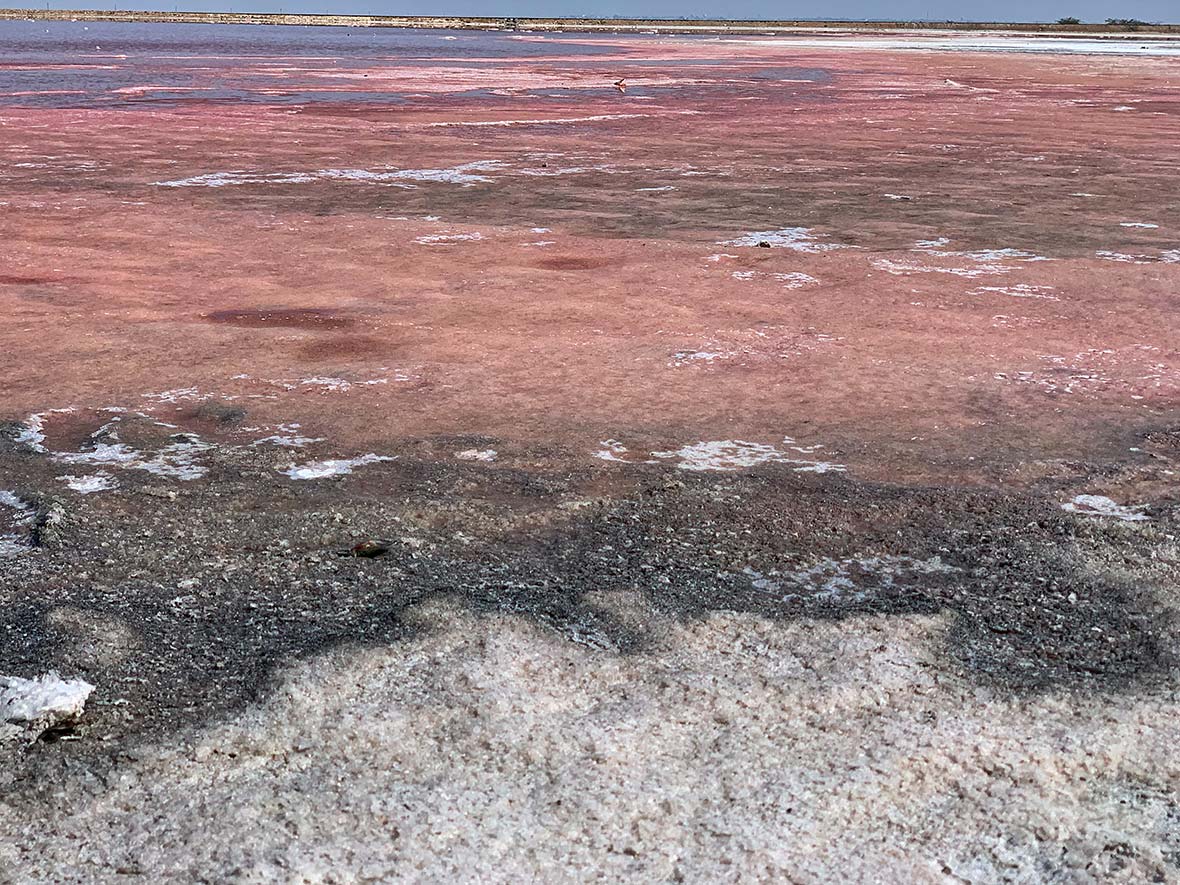
ABOVE: Multi-colored earth of the Sambhar Salt Lake.
Sambhar Lake receives water from five rivers; however, depending on the time of the year, it could be completely dry or filled with enough water to attract migratory birds, mainly pink flamingos. The dry season sees tractors and cars zip past at high speeds, stirring up dust on open land that is diversion free for miles. No wonder then that so many automobile manufacturers pick Sambhar Lake as the location to shoot their advertisements.
Kishangarh
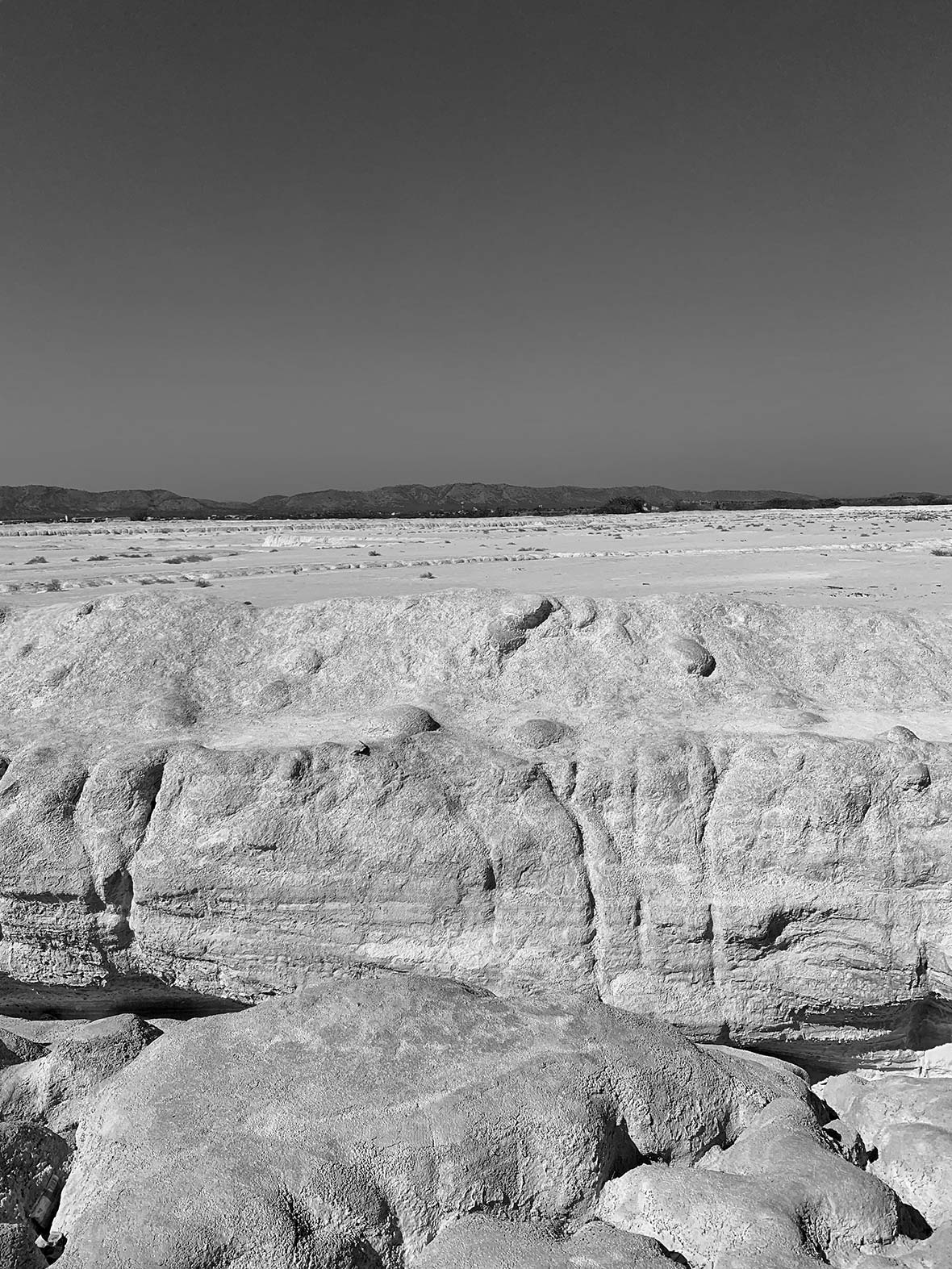
An hour away from Pushkar, toward Jaipur, is Kishangarh. A minor yet busy town, it is known to have one of the largest marble markets in the country. But it is the marble dumping yard that is a genuinely unusual local attraction where people come to experience “snow” all year around.
The yard, used for dumping the slurry from cutting marble, consists of 50-foot deep wells which have over the years transformed the area into a never-ending plateau of white. Typically used for fashion shoots, the white background sometimes replicates snow, especially in low budget productions.
The perfect short drive, there is a jovial atmosphere at the dumping yard, with families and friends arriving in large numbers to take photos and enjoy this human-made marvel.
There is no doubt that Pushkar comes alive during the Camel Fair made even more special because of the annual Hot Air Balloon Festival that takes place around the same time. But it is the subtle magnetism of the city that oozes spirituality and rustic charm on its “off days” which makes it among the most underrated places to visit in all of Rajasthan.

